
Common sense will actually keep you pretty safe when navigating the “etiquette minefield” of a job interview in Japan.
A long, long time ago, when young Californian Casey would mention that he someday hoped to live in Japan, he’d often have classmates and teachers tell him how incredibly difficult that would be due to the linguistic, financial, and cultural difficulties of living in the land of the rising sun. Not that they had ever lived there either, of course, but it was just obvious that Japan was cryptic and challenging enough to make things very unpleasant for anyone who didn’t grow up within its society.
But when the chance to move across the Pacific came, I took it, and discovered that in many ways, life in Japan isn’t nearly as hard as some people make it out to be. Which brings us to a business manners video from Bloomberg Asia, which describes job interviews in Japan as “an etiquette minefield for foreigners and locals alike.”
As it starts, we see a Caucasian man wearing a blazer, mismatched slacks, and a vest over a shirt that’s open at the collar. However, the video is quick to point out that, when job-hunting in Japan, “uniformity is paramount,” and so some quick video editing redressed him in a plain black suit with a white shirt, and a tie (noting that black and white are inappropriate tie color choices).
Yes, you will see almost all new job applicants dressed like this in Japan, which means, technically, that it could be called “uniformity.” However, you could also call it “wearing a non-flashy suit to your job interview,” which really doesn’t seem like such an odd bit of advice.
In general, Japanese business attire is more low-key in terms of color and patterns than what you’ll see in offices overseas. In just about any country, serious job-seekers avoid wearing gaudy fashions to their interviews, so simply applying that same logic to Japan’s more conservative baseline makes a plain black suit and plain white shirt pretty obvious choices.
▼ By the way, women can generally skip the necktie.
If you’re wearing a black suit, black shoes, as also specified in the video, are the obvious way to go. As for the tie color, pairing a white tie with a white shirt would look as odd in other countries as it does in Japan. Plus, white ties are indicative of wedding celebrations, and black ties funerals, which which is why they’re not recommended.
It’s worth noting than in Japan, the vast majority of white-collar workers graduate from college at 22 and start working right away, meaning that they’ll have an immediate need to buy a couple of suits before finishing school. Making one of those a plain black “recruit suit,” as the type shown in Bloomberg’s video is commonly called in Japan, is also a logical choice.
Once the video’s star is appropriately dressed, the next order of business in knocking on the interviewer’s door. This is actually an odd situation, since most companies will have a receptionist or other employee escort the applicant to the interview room.
But yes, Bloomberg is correct in saying that knocking three times is generally said to be the correct protocol when entering a Japanese office, with two knocks being for checking if a bathroom stall is occupied. However, mistaking one for the other is a bit like using your salad fork for your entrée. It’s a minor faux pas, but nothing that any reasonable person would feel so deeply offended by to consider this part of an “etiquette minefield.”
After giving his triple knock, the man in the video steps into the interview room, where the on-screen text instructs him first to “say ‘excuse me.’” While the man in the video says it in English, the proper Japanese phrase for this situation is “shitsurei shimasu,” and while it does translate to “excuse me,” it’s also the most common and polite way to ask for someone’s attention when entering a room in Japan, so this isn’t so much a cultural curiosity as it is just a matter of knowing how to speak Japanese. And if your interview is being conducted in English (like the man in the video’s apparently is), no reasonable Japanese interviewer is going to get bent out of shape if you enter and say “hello” instead of “excuse me.”
▼ “Damn, I am so hungover” is an opening gambit you’ll want to avoid, though.
Next, the video says, you should bow, and that advice is spot-on. “People in Japan bow as a greeting” seems to be pretty common knowledge, though, and is definitely the sort of thing you’ll already know if you’re applying for a job in Japan. And since it doesn’t require the physical proximity that a handshake does, it seems like common sense to do it as soon as you’ve got the interviewer’s attention.
The next point, walking around to the left side of the chair before sitting down, is held by sticklers to be respectful business etiquette in Japan (it’s related to an often-ignored concept of things being arranged in increasing importance from right to left). However, it’s something that even many Japanese people aren’t aware of, and isn’t going to make or break your interview.
The video then takes a moment to discuss bowing technique, wisely pointing out that in Japan, the preferred style s to bend at the hips and keep your back straight. It’s really no more complicated to remember than, for instance, that when giving a business handshake, you probably shouldn’t have your elbow flared out to the side if you want to give a respectful impression.
The numerical data Bloomberg provides, though, can be taken with a grain of salt. The video says you should bow at a 30-degree angle upon entering, and with a 45-degree angle upon leaving. If you can pull off that sort of precision, great, but you should also be aware that Japanese interview teams don’t include a technician with a protractor who measures the angle of applicants’ bows.
To paraphrase once more, 30 and 45-degree angles can also be thought of as “about half-way forward,” which just makes basic sense. If you bow, say, only 10 degrees, that’s obviously going to look more like a nod than a bow. Likewise, leaning forward so far that your torso is almost horizontal is going to look melodramatically silly. Bowing more deeply when you leave, though, is a classy move, since a deeper bow (again, logically) implies a deeper respect, and when you leave, you’re thanking the interviewer for having taken the time to see you.
Once in the chair, Bloomberg says it’s important to sit straight and not lean back. In other words, keep your posture attentive to show you’re taking the interview, and thus the position you’re applying for, seriously. Again…this doesn’t seem like something unique to Japan.
▼ In what country is this the recommended way to sit when you’re asking for a job?
Men are advised to put a hand on each knee, and woman to fold them in their laps. Those are definitely good points to remember, and since some Japanese companies set up their interviews with a panel of interviewers seated in a row in front of the applicant, who may not have a desk in front of him or herself, it’s actually kind of nice to know there’s a set, “safe” thing to do with your constantly visible hands.
Finally, Bloomberg says “And never, ever be late, or you may as well have stayed home.” I’m sorry to repeat myself, but, again, this pretty much goes for every country in the world. If the very first impression you make with an interviewer is, “You know, I’d like this job, but how flexible are you about me really doing the things I’m supposed to?” you’re not getting hired.
▼ No point in running if the ship has already sailed.
So, let’s review the video’s advice:
1. Wear a suit
2. Don’t wear flashy clothes
3. Knock three times
4. Speak the language you’re being interviewed in
5. Greet the interviewer in the standard, polite manner for the country
6. Sit down from the left side of the chair
7. Don’t slouch
8. Put your hands on your knees (if you’re a man) or fold them in your lap (if you’re a woman)
9. Be on time
Really, only 3, 6, and 8 seem uniquely Japanese. As for the other two-thirds of the list? If you can’t keep those straight, your job-hunting difficulties probably aren’t going to be limited to jobs in Japan.
Source, featured image: Facebook/Bloomberg Asia
Top image: Pakutaso
Insert images: Pakutaso (1, 2, 3, 4, 5, 6) (edited by RocketNews24)
[ Read in Japanese ]
Follow Casey on Twitter, where he recalls that he did in fact wear a suit to his RocketNews24 interview.
[ Read in Japanese ]

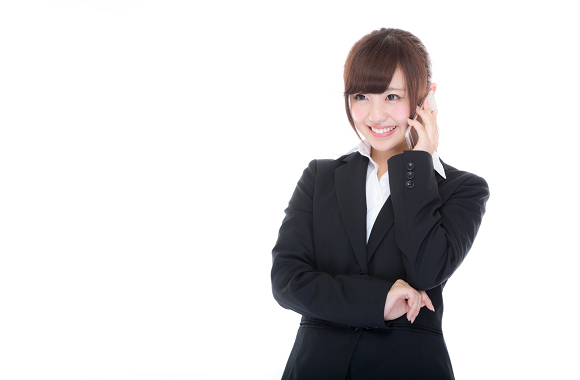

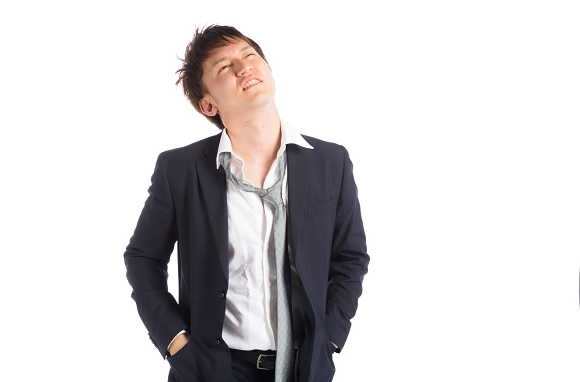
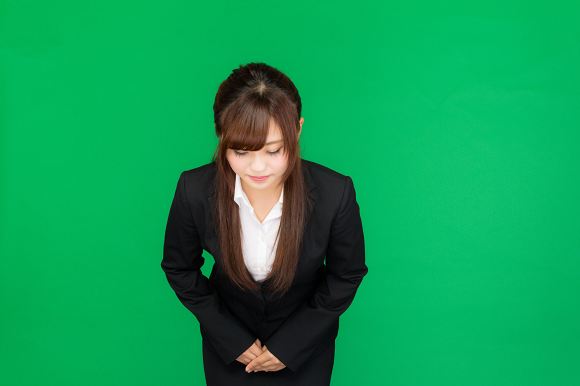
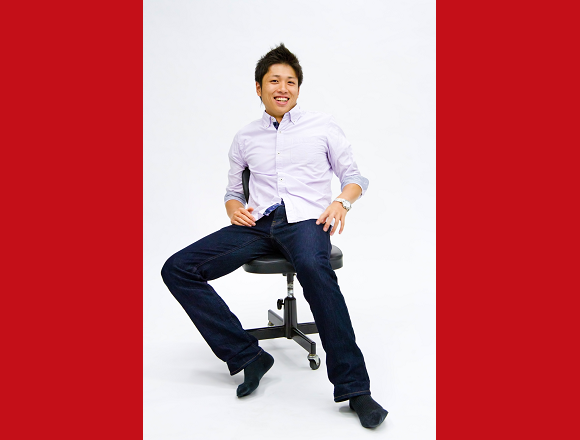
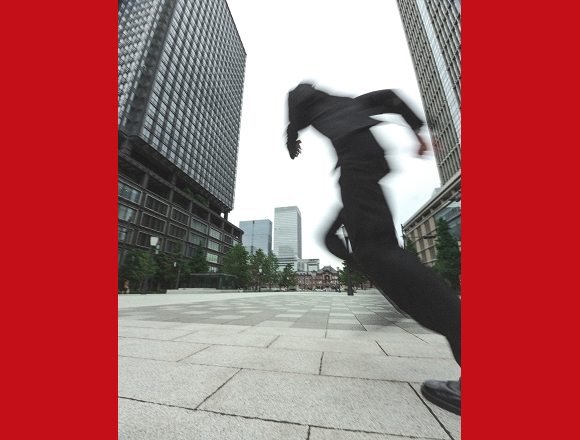
 Rules of tea, business cards, and bowing – 10 Japanese business manners young people are tired of
Rules of tea, business cards, and bowing – 10 Japanese business manners young people are tired of Foreigners in Japan sound off on the top four quirks of the Japanese job-hunting system
Foreigners in Japan sound off on the top four quirks of the Japanese job-hunting system Cats bowing in apology is Japan’s latest weird gacha capsule toy collection
Cats bowing in apology is Japan’s latest weird gacha capsule toy collection Pantene ad asks why people in Japan are forced to look the same when job hunting
Pantene ad asks why people in Japan are forced to look the same when job hunting Japanese clothing chain offers an answer to job-hunting suit conundrum
Japanese clothing chain offers an answer to job-hunting suit conundrum Japan’s new difficult-to-drink-from beer glass protects your liver, but it’s a brutal experience
Japan’s new difficult-to-drink-from beer glass protects your liver, but it’s a brutal experience How to order snacks on a Shinkansen bullet train in Japan
How to order snacks on a Shinkansen bullet train in Japan Demon Slayer: Kimetsu no Yaiba gets new roller coaster attractions and food at Universal Studios Japan
Demon Slayer: Kimetsu no Yaiba gets new roller coaster attractions and food at Universal Studios Japan New Pokémon ice cream, dessert drinks, and cool merch coming to Baskin-Robbins Japan【Pics】
New Pokémon ice cream, dessert drinks, and cool merch coming to Baskin-Robbins Japan【Pics】 Burger King Japan suddenly adds Dr. Pepper and Dr. Pepper floats to its menu nationwide
Burger King Japan suddenly adds Dr. Pepper and Dr. Pepper floats to its menu nationwide Hello, cosmetics! Clinique teams up with Hello Kitty this summer for first-time collaboration
Hello, cosmetics! Clinique teams up with Hello Kitty this summer for first-time collaboration “The most Delicious Cup Noodle in history” – Japan’s French Cup Noodle wins our heart【Taste test】
“The most Delicious Cup Noodle in history” – Japan’s French Cup Noodle wins our heart【Taste test】 To combat declining birth rate, Japan to begin offering “Breeding Visas” to foreigners
To combat declining birth rate, Japan to begin offering “Breeding Visas” to foreigners Starbucks teams up with Japanese shochu brewery for a whole new coffee experience
Starbucks teams up with Japanese shochu brewery for a whole new coffee experience Studio Ghibli releases giant Totoro plushies in Japan
Studio Ghibli releases giant Totoro plushies in Japan Nintendo history you can feel – Super NES, N64, and GameCube controllers become capsule toys
Nintendo history you can feel – Super NES, N64, and GameCube controllers become capsule toys Starbucks releases a cute Frappuccino and Unicorn Cake…but not in Japan
Starbucks releases a cute Frappuccino and Unicorn Cake…but not in Japan Kyoto Tower mascot termination reveals dark side behind cute Japanese characters
Kyoto Tower mascot termination reveals dark side behind cute Japanese characters McDonald’s Japan’s Soft Twist Tower: A phantom ice cream only sold at select branches
McDonald’s Japan’s Soft Twist Tower: A phantom ice cream only sold at select branches Yabai Ramen: What makes this Japanese ramen so dangerous?
Yabai Ramen: What makes this Japanese ramen so dangerous? Finally! Nintendo Japan expands Switch 8-bit controller sales to everybody, Online member or not
Finally! Nintendo Japan expands Switch 8-bit controller sales to everybody, Online member or not Japanese government wants to build luxury resorts in all national parks for foreign tourists
Japanese government wants to build luxury resorts in all national parks for foreign tourists 10 things you should buy at 7-Eleven in Japan
10 things you should buy at 7-Eleven in Japan Studio Ghibli releases anime heroine cosplay dresses that are super comfy to wear
Studio Ghibli releases anime heroine cosplay dresses that are super comfy to wear Woman charged for driving suitcase without a license in Osaka
Woman charged for driving suitcase without a license in Osaka Studio Ghibli unveils My Neighbour Totoro miniature house model
Studio Ghibli unveils My Neighbour Totoro miniature house model Kyoto experiencing problems with foreign tourists not paying for bus fares, but not on purpose
Kyoto experiencing problems with foreign tourists not paying for bus fares, but not on purpose Fighting mild hunger with a Japanese soda that turns into jelly in the stomach【Taste test】
Fighting mild hunger with a Japanese soda that turns into jelly in the stomach【Taste test】 Studio Ghibli’s Howl’s Moving Castle tapestry unveiled in Japan for first time
Studio Ghibli’s Howl’s Moving Castle tapestry unveiled in Japan for first time McDonald’s new Happy Meals offer up cute and practical Sanrio lifestyle goods
McDonald’s new Happy Meals offer up cute and practical Sanrio lifestyle goods Sales of Japan’s most convenient train ticket/shopping payment cards suspended indefinitely
Sales of Japan’s most convenient train ticket/shopping payment cards suspended indefinitely Sold-out Studio Ghibli desktop humidifiers are back so Totoro can help you through the dry season
Sold-out Studio Ghibli desktop humidifiers are back so Totoro can help you through the dry season Japanese government to make first change to romanization spelling rules since the 1950s
Japanese government to make first change to romanization spelling rules since the 1950s Foreigner’s request for help in Tokyo makes us sad for the state of society
Foreigner’s request for help in Tokyo makes us sad for the state of society Ghibli founders Toshio Suzuki and Hayao Miyazaki contribute to Japanese whisky Totoro label design
Ghibli founders Toshio Suzuki and Hayao Miyazaki contribute to Japanese whisky Totoro label design Doraemon found buried at sea as scene from 1993 anime becomes real life【Photos】
Doraemon found buried at sea as scene from 1993 anime becomes real life【Photos】 Tokyo’s most famous Starbucks is closed
Tokyo’s most famous Starbucks is closed Princesses, fruits, and blacksmiths: Study reveals the 30 most unusual family names in Japan
Princesses, fruits, and blacksmiths: Study reveals the 30 most unusual family names in Japan Man forgets the first rule of Japanese job interviews: Don’t steal the boss’ wallet
Man forgets the first rule of Japanese job interviews: Don’t steal the boss’ wallet “Face Hiring”: Japanese cosmetics company Isehan’s new hiring campaign is causing a stir
“Face Hiring”: Japanese cosmetics company Isehan’s new hiring campaign is causing a stir Tokyo store that only sells black shirts sheds light on why it’s opening mid-pandemic
Tokyo store that only sells black shirts sheds light on why it’s opening mid-pandemic No gender, photo, or first name – Japanese company makes major shakeup to job application forms
No gender, photo, or first name – Japanese company makes major shakeup to job application forms Real fashion police: Con man arrested in Tokyo, police tipped off by ill-fitting suit
Real fashion police: Con man arrested in Tokyo, police tipped off by ill-fitting suit Japanese business wear brand creates helpful graph to tell you what to wear at work
Japanese business wear brand creates helpful graph to tell you what to wear at work Japanese ministers call for reform of company hiring practices that focus on new graduates
Japanese ministers call for reform of company hiring practices that focus on new graduates Blink and you’ll miss what riled racists in this Japanese McDonald’s ad 【Video】
Blink and you’ll miss what riled racists in this Japanese McDonald’s ad 【Video】 China tried to build a replica of Manhattan… and it’s not looking so great
China tried to build a replica of Manhattan… and it’s not looking so great New list of inappropriate Japanese job interview questions from prefectural labor department
New list of inappropriate Japanese job interview questions from prefectural labor department Japanese pool player gives hilarious English interview complete with PPAP reference【Video】
Japanese pool player gives hilarious English interview complete with PPAP reference【Video】 More Japanese workers are ditching crisp business suits for casual and comfortable wear
More Japanese workers are ditching crisp business suits for casual and comfortable wear The top 10 instances when Japanese people feel thankful to be Japanese
The top 10 instances when Japanese people feel thankful to be Japanese Make the ocean your office with new TRUE WETSUITS from Quicksilver 【Video】
Make the ocean your office with new TRUE WETSUITS from Quicksilver 【Video】 Teen job hunter learns: Do not screw around at an interview with McDonald’s Japan
Teen job hunter learns: Do not screw around at an interview with McDonald’s Japan Suit up for video conference calls with new business pyjamas from Japan
Suit up for video conference calls with new business pyjamas from Japan Can you sing at least one anime song? Then you’re a step closer to a job with this company
Can you sing at least one anime song? Then you’re a step closer to a job with this company
Leave a Reply